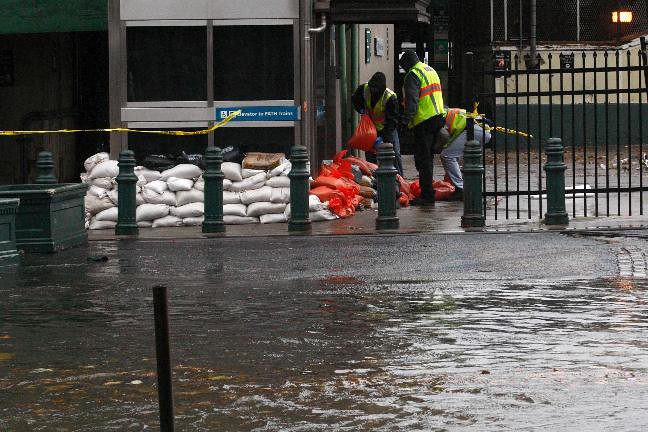This article is the initial report from a column that aims to explore politics, history, and culture, specifically as they pertain to race and gender. It will probe subjects such as gun violence, child marriage, domestic violence, and racial brutality. It will examine these ideas, and the issues that ensue, on both a local and global scale. Its goal is to directly and candidly address these matters in order to contribute to the conversation and deepen understanding of the topics at hand.
The city of Boston is well known for many reasons. People across the country know the capital of Massachusetts for its myriad of Dunkin’ Donuts locations, exceptional seafood, and fierce patriotism that can be traced all the way back to the early days of American colonialism. But perhaps the most notable facet of Boston is that it is home to 35 colleges and universities, marking the city as one that celebrates knowledge, progress, and higher education.[1]
However, known to few, and in stark contrast to the values just listed, Boston ranks seventh on a list of the most racially segregated metropolitan areas in the United States.[2] Despite the widespread notion that Boston is a liberal city, it has historically struggled with mitigating—and ultimately obliterating—racial divides.
In examining its past, it becomes clear that Boston has maintained racially discriminatory practices since it was founded. Even within the last century, there exists a pattern of resistance to furthering racial equality. For proof of this blatant hesitancy, look no further than one of America’s most beloved sports teams that calls Boston home. Under the supervision of Tom Yawkey, the Red Sox was the last Major League Baseball team to integrate, waiting until 1959 to accept African American players.
Though he never publicly shared his reasoning, one can assume that Yawkey’s decision not to sign Jackie Robinson when he tried out for the Red Sox in 1945 had much to do with race. In fact, Yawkey’s staunch refusal to sign on any African-American players over the course of 12 baseball seasons beginning in 1947, when every other team in America was integrating, says volumes in regards to his stance on the issue.
Even after integrating the majority of societal institutions, Boston’s current cultural focus still fails at recognizing people of color, specifically African-Americans. One of the most compelling pieces of evidence of this lies within a rather customary part of Massachusetts’ geography: street names.
Data from state directories reveals that several streets throughout Massachusetts are named after historical figures. For example, 191 streets are named after Adams, 193 are named in honor of Washington, and 220 pay homage to Lincoln.[3] In contrast, few streets are named after African-American leaders, and of the few that are, only a handful of them are placed in the center of Boston. Instead, the majority of streets named in the honor of African Americans are found in neighborhoods that are home to a larger population of Black residents.[4] Take for instance, Roxbury, Massachusetts, which the City of Boston website names “the heart of Black culture.”[5] It is here, where figures gathered as recently as 2015 indicate a population in which 61.3 percent of residents identify as Black, that one can easily find streets with names like Malcolm X Boulevard and M.L.K. Jr. Boulevard.[6][7]
While seemingly only a detail in the grand scheme of things, something as simple as street names calls greater issues into consideration. City planners were quick to commemorate the lives of slave masters, yet made little progress in acknowledging key individuals who faced racial discrimination and fought back.
The reality is that keeping streets named after slaveholders—and other debatably racist individuals—in place instills a societal norm characterized by a casual dismissiveness of intolerance. Erasing these names from our streets would not obliterate the fact that brutal exploitation and oppressive tendencies were, and still are, a commonality in America, even among our most respected leaders. Rather, taking them down would show that we actively denounce their reprehensible actions. Though possible, renaming every street that celebrates a problematic leader is a daunting task. However, it would be a relatively easy act of reformism if the intersections of these streets were to be named after figures who dedicated the majority of their time to fighting the persistence of the aforementioned racial injustices. By juxtaposing these two categories of historical figures, Boston’s streets would, at long last, move toward becoming conclusively integrated.
Physical and public commemorations are instrumental, as they prompt us to discuss and recognize important moments and figures in history. By placing the names of prominent African-Americans in the center of life in Boston, citizens would be forced to recognize and familiarize themselves with the names of figures who have initiated progress in the realm of racial equality. While Yawkey Way is proudly regarded as one of Boston’s most important historic sights, it commemorates a racist figure in this city’s history. Still, it is safe to assume that locals could more readily describe Yawkey’s legacy than that of most African-American leaders who actively fought segregation in America.
To offset this imbalance, street intersections should be named after leading members of the Civil Rights Movement. For example, the student nonviolent coordinating committee (SNCC), which was formed to give Black people a greater platform and stronger voice over the course of the Civil Rights Movement, deserves more open recognition. Their group promoted integration that took steps towards a social order of justice permeated by love.[8]
Key figures in the movement like Ella Baker, who organized the conference that led to the foundation of SNCC, or Boston native Peggy Dammond, who worked with the movement in southwest Georgia, merit more recognition. It was their activism that successfully helped pave the road to increased racial equality across the country, and thus they deserve to be memorialized in the very structure of Boston’s streets. They were leaders in a movement whose effects echoed throughout the entire nation, including the state of Massachusetts. Baker and Dammond’s actions truly served to deepen the connection among civil rights activists in the North and South, particularly in Boston, where racial tension persisted.
Backlash against this decision would ostensibly arise, as people are often opposed to large-scale municipal changes. In fact, violent protests have erupted as a result of much smaller changes, such as during the removal of a statue depicting Confederate General Robert E. Lee in Charlottesville, Virginia, last August. Though relatively less controversial than Lee’s statue, Boston residents and business owners might have qualms with a sudden alteration to their street addresses. Beyond complaints of mild inconveniences imposed on common citizens, however, these changes would most likely receive deeply adverse reactions from political extremists. This is especially plausible when considering the fact that Massachusetts is home to more hate groups than any other state in the New England area. Of these, several are classified as neo-Nazi and white supremacist groups.[9]
Indubitably, these organizations would find the memorialization of Black leaders infuriating. Being that they are united by their intolerance of racial equality, these factions would likely find the diversification of street names offensive and asinine. Members would argue that the remembrance of these figures need not be forced on passersby, and that the change is unnecessary.
On the contrary, it is imperative that more cities in America make tangible changes in order to commend the bravery and intensity with which African-Americans fought during the Civil Rights Movement and otherwise. Naming street intersections after these figures is a viable tactic to ensure that people recall the heroism of these influential individuals.
In memorializing these figures with street intersections named in their honor, Boston would summon a vision of America that is not only striving to achieve and maintain racial equality, but also one where all Americans are better educated on the history of African-American oppression and justice.
Increased public education about history that is truthful and inclusive of African-Americans is ever more imperative in a political climate that is steeped with ignorance. When we are not taught about these topics, we are not encouraged to respect or admire the people they include. As a result, we may continue to foster the negative stereotypes that are prevalent in many media portrayals of African-Americans.
Lack of cultural education leads to racial prejudices that have maintained the extents and frequency of injustices against Black people in America. These range from police brutality to mass incarceration to microaggressions. By excluding Black history and continuing to celebrate racist individuals, America has effectively emboldened people to use the kind of hateful rhetoric that dominates the current presidential administration. Increasing the presence of inclusive memorials is a step towards a more diverse and in-depth education for America and the world at large.
Thousands of African-Americans pursued change and equality tirelessly throughout the Civil Rights Movement and beyond. If Boston seeks to maintain its perceived status as a liberal city, it is time that we consider memorializing these figures, so that one day they might be as well known as our love for fast food coffee joints.
[1] Meade, Peter. “Boston by the numbers Colleges and Universities.” Boston Planning & Development Agency . January 2010. http://www.bostonplans.org/getattachment/3488e768-1dd4-4446-a557-3892bb0445c6/.
[2] Kent, Alexander, and Thomas C. Frohlich. “America’s Most Segregated Cities.” August 19, 2015. 247wallst.com.
[3] Lefrak, Mikaela. “Most Common Street Names in Massachusetts.” Boston.com, The Boston Globe, June 20, 2014. www.boston.com/news/local-news/2014/06/20/most-common-street-names-in-massachusetts.
[4] “City of Boston Streetbook,” City Works, July 2017. https://www.cityofboston.gov/publicworks/streetbook.
[5] “Roxbury.” Boston.gov. October 11, 2017. https://www.boston.gov/neighborhood/roxbury.
[6] “Race and Ethnicity in Roxbury, Boston, Massachusetts (Neighborhood).” Race and Ethnicity in Roxbury, Boston, Massachusetts (Neighborhood) – Statistical Atlas. https://statisticalatlas.com/neighborhood/Massachusetts/Boston/Roxbury/Race-and-Ethnicity.
[7] “City of Boston Streetbook.” April 26, 2016. https://www.cityofboston.gov/publicworks/streetbook/streetbook_04262016.pdf.
[8] Constitution of the Student Nonviolent Coordinating Committee Originally adopted spring 1960, Raleigh, North Carolina As revised 29 April 1962
[9] “Hate Map.” Southern Poverty Law Center, November 18, 2017. www.splcenter.org/hate-map.



